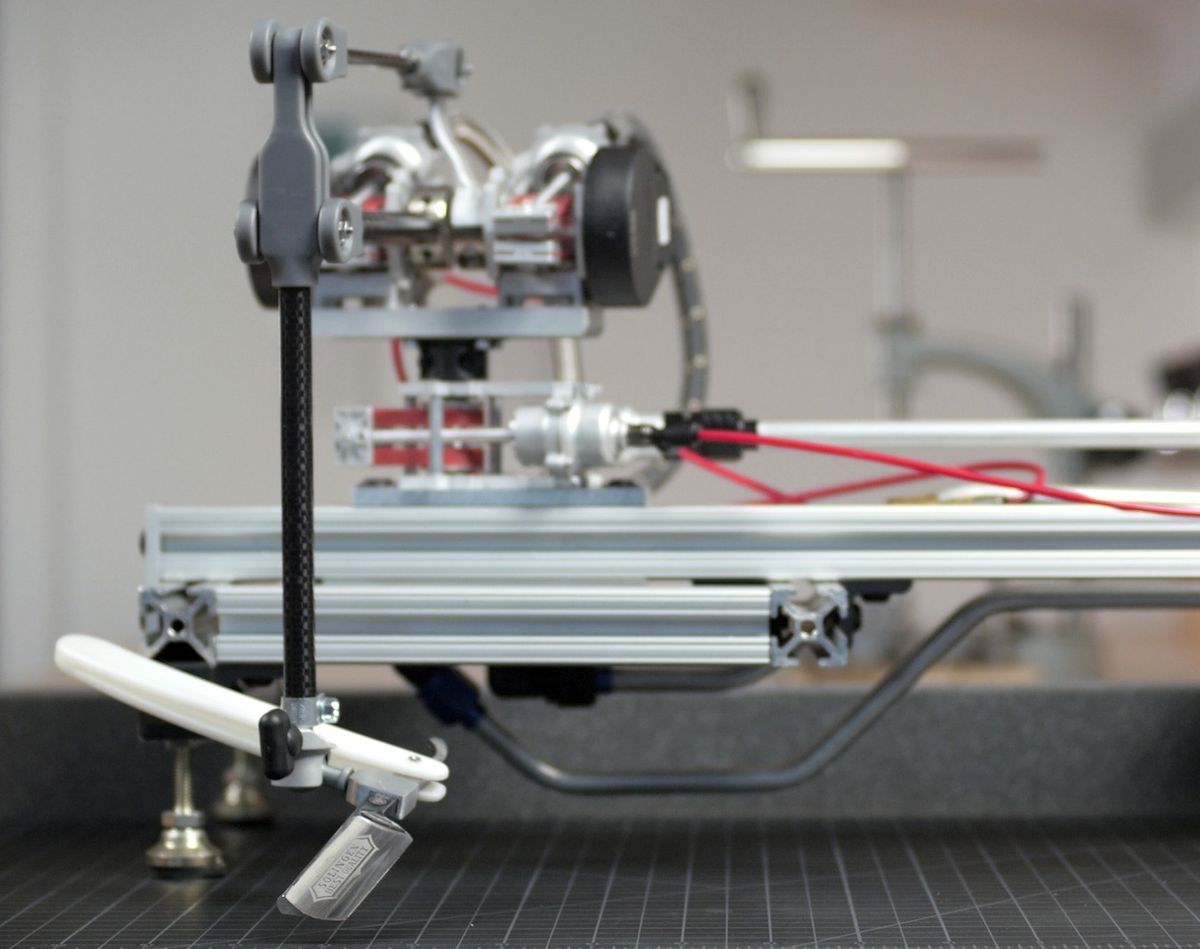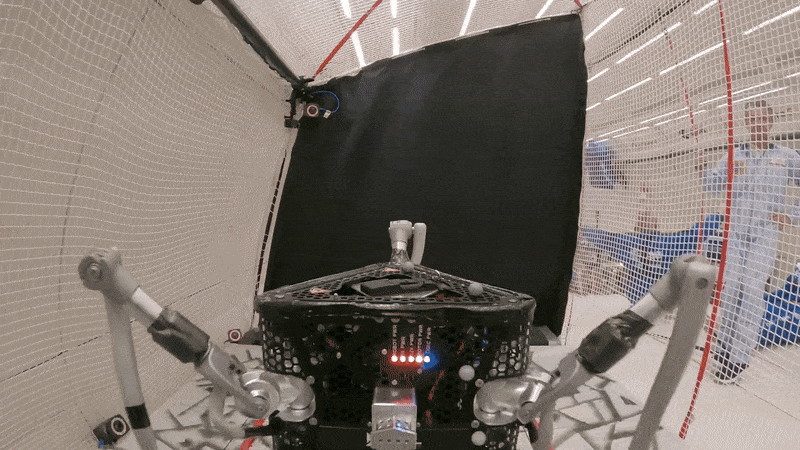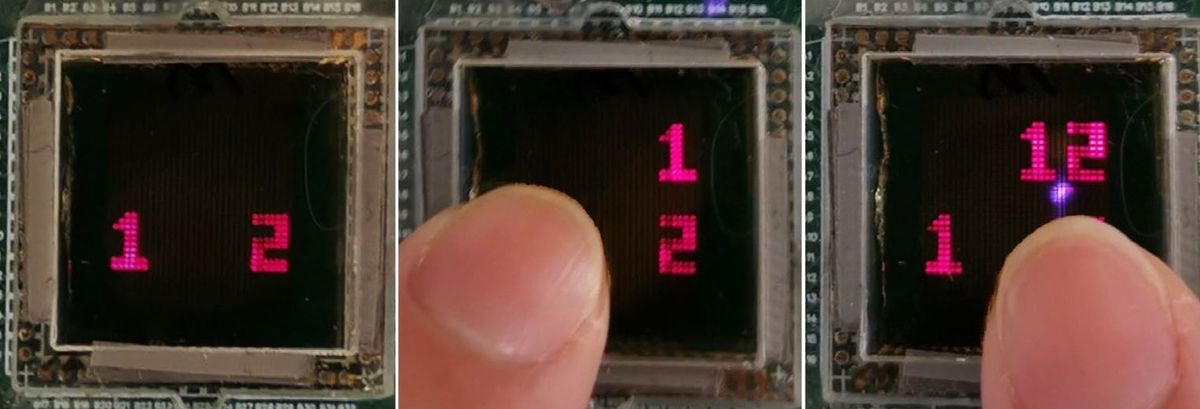Roboticists love hard problems. Challenges like the DRC and SubT have helped (and are still helping) to catalyze major advances in robotics, but not all hard problems require a massive amount of DARPA funding—sometimes, a hard problem can just be something very specific that’s really hard for a robot to do, especially relative to the ease with which a moderately trained human might be able to do it. Catching a ball. Putting a peg in a hole. Or using a straight razor to shave someone’s face without Sweeney Todd-izing them.
This particular roboticist who sees straight-razor face shaving as a hard problem that robots should be solving is John Peter Whitney, who we first met back at IROS 2014 in Chicago when (working at Disney Research) he introduced an elegant fluidic actuator system. These actuators use tubes containing a fluid (like air or water) to transmit forces from a primary robot to a secondary robot in a very efficient way that also allows for either compliance or very high fidelity force feedback, depending on the compressibility of the fluid.

Whitney is now at Northeastern University, in Boston, and he recently gave a talk at the RSS workshop on “Reacting to Contact,” where he suggested that straight razor shaving would be an interesting and valuable problem for robotics to work toward, due to its difficulty and requirement for an extremely high level of both performance and reliability.
Now, a straight razor is sort of like a safety razor, except with the safety part removed, which in fact does make it significantly less safe for humans, much less robots. Also not ideal for those worried about safety is that as part of the process the razor ends up in distressingly close proximity to things like the artery that is busily delivering your brain’s entire supply of blood, which is very close to the top of the list of things that most people want to keep blades very far away from. But that didn’t stop Whitney from putting his whiskers where his mouth is and letting his robotic system mediate the ministrations of a professional barber. It’s not an autonomous robotic straight-razor shave (because Whitney is not totally crazy), but it’s a step in that direction, and requires that the hardware Whitney developed be dead reliable.
Perhaps that was a poor choice of words. But, rest assured that Whitney lived long enough to answer our questions after. Here’s the video; it’s part of a longer talk, but it should start in the right spot, at about 23:30.
If Whitney looked a little bit nervous to you, that’s because he was. “This was the first time I’d ever been shaved by someone (something?!) else with a straight razor,” he told us, and while having a professional barber at the helm was some comfort, “the lack of feeling and control on my part was somewhat unsettling.” Whitney says that the barber, Jesse Cabbage of Dentes Barbershop in Somerville, Mass., was surprised by how well he could feel the tactile sensations being transmitted from the razor. “That’s one of the reasons we decided to make this video,” Whitney says. “I can’t show someone how something feels, so the next best thing is to show a delicate task that either from experience or intuition makes it clear to the viewer that the system must have these properties—otherwise the task wouldn’t be possible.”
And as for when Whitney might be comfortable getting shaved by a robotic system without a human in the loop? It’s going to take a lot of work, as do most other hard problems in robotics. “There are two parts to this,” he explains. “One is fault-tolerance of the components themselves (software, electronics, etc.) and the second is the quality of the perception and planning algorithms.”
He offers a comparison to self-driving cars, in which similar (or greater) risks are incurred: “To learn how to perceive, interpret, and adapt, we need a very high-fidelity model of the problem, or a wealth of data and experience, or both” he says. “But in the case of shaving we are greatly lacking in both!” He continues with the analogy: “I think there is a natural progression—the community started with autonomous driving of toy cars on closed courses and worked up to real cars carrying human passengers; in robotic manipulation we are beginning to move out of the ‘toy car’ stage and so I think it’s good to target high-consequence hard problems to help drive progress.”
Of course, the ultimate goal here is much more general than the creation of a dedicated straight razor shaving robot; it’s a challenge that includes a host of sub-goals that will benefit robotics more generally. This particular hardware system Whitney is developing is actually a testbed for exploring MRI-compatible remote needle biopsy, and he and his students are collaborating with Brigham and Women’s Hospital in Boston on adapting this technology to prostate biopsy and ablation procedures. They’re also exploring how delicate touch can be used as a way to map an environment and localize within it, especially where using vision may not be a good option. “These traits and behaviors are especially interesting for applications where we must interact with delicate and uncertain environments,” says Whitney. “Medical robots, assistive and rehabilitation robots and exoskeletons, and shared-autonomy teleoperation for delicate tasks.”
A paper with more details on this robotic system, “Series Elastic Force Control for Soft Robotic Fluid Actuators,” is available on arXiv.
Evan Ackerman is a senior editor at IEEE Spectrum. Since 2007, he has written over 6,000 articles on robotics and technology. He has a degree in Martian geology and is excellent at playing bagpipes.




